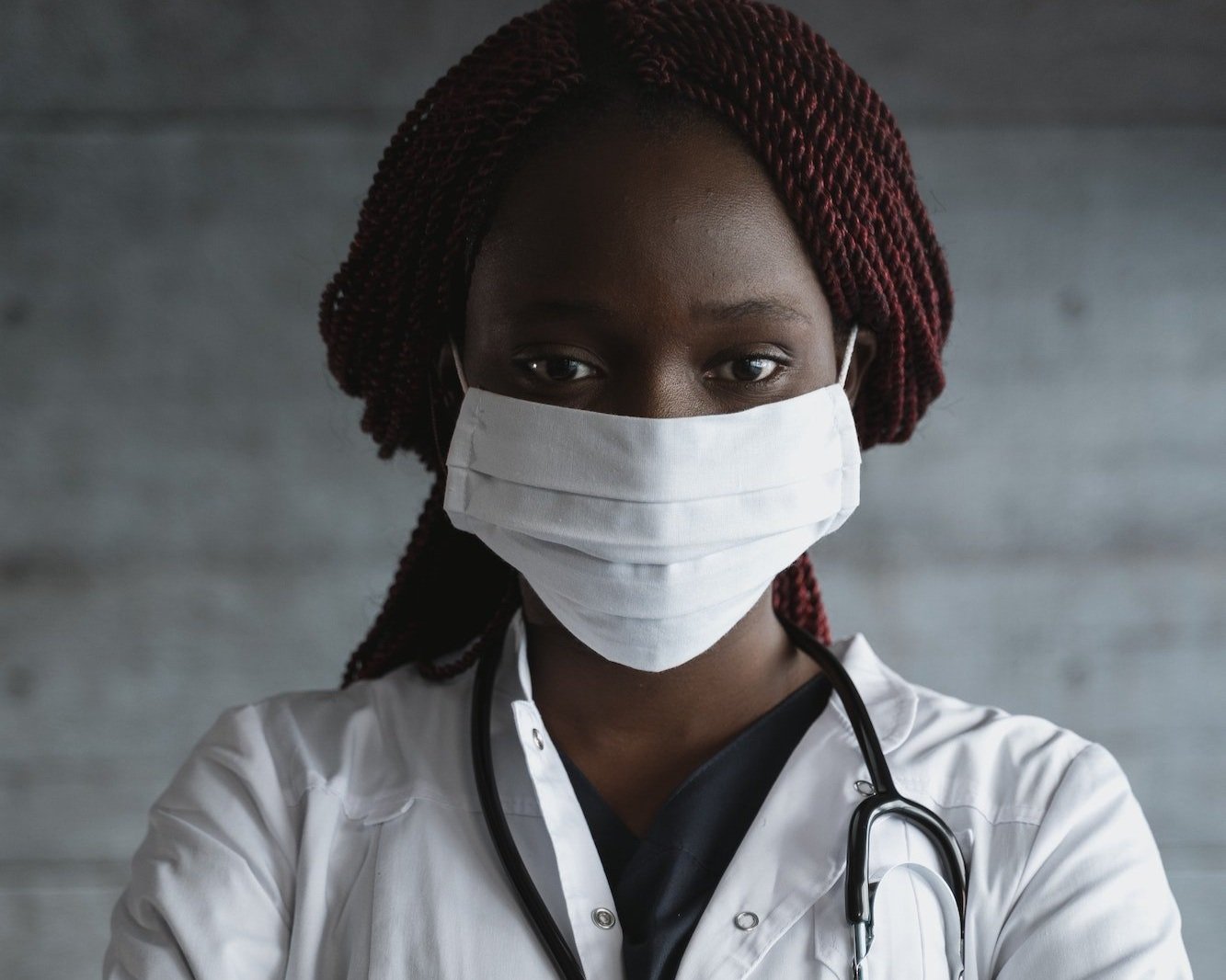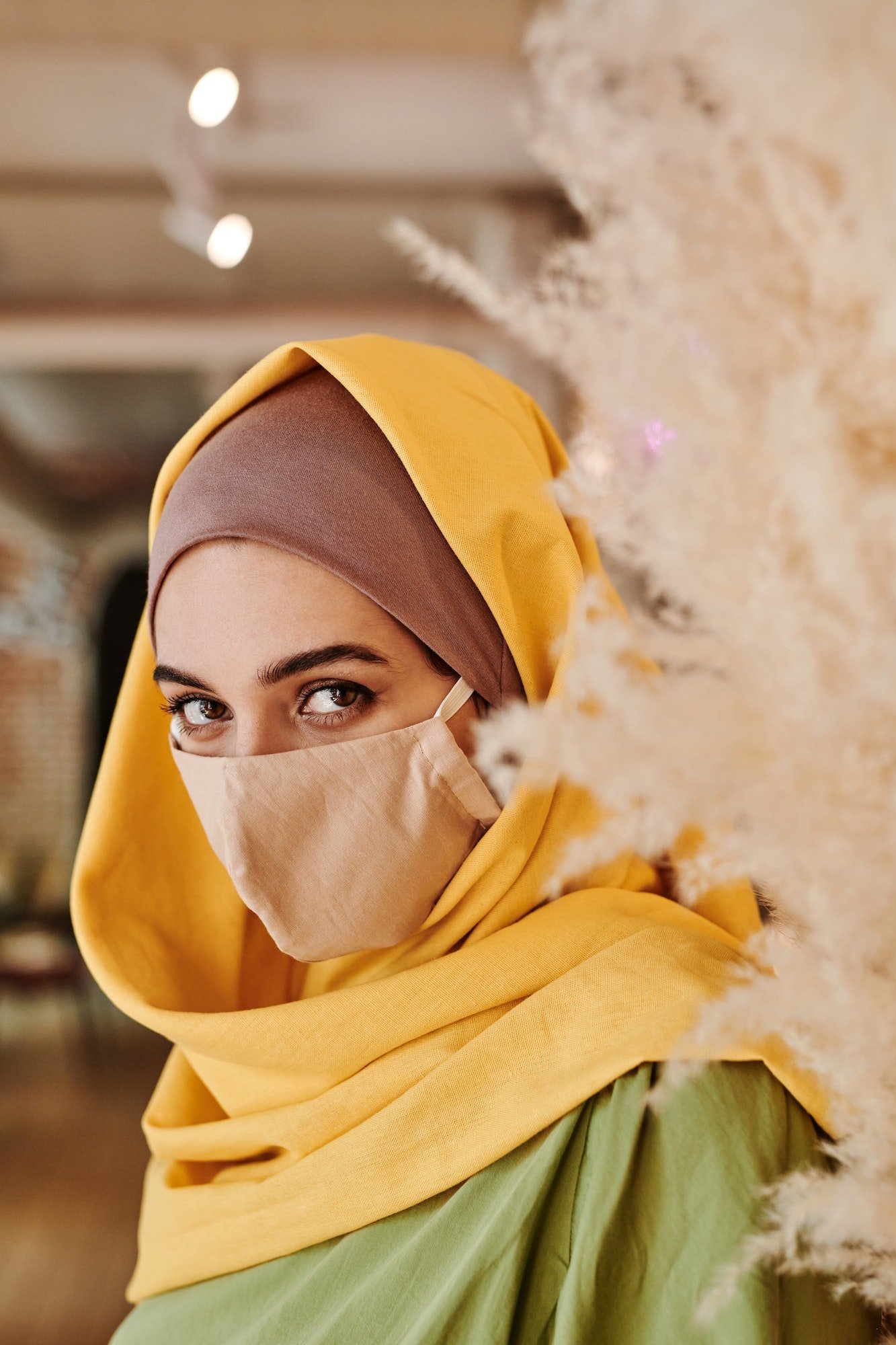The Clarion Call: The People’s CDC Provides A Sobering Look at the COVID-19 Crisis
Photos by August De Richelieu, Charlotte May, Laura James, Tima-Miroshnichenko, and Monstera. Originally published in AphroChic magazine Issue 11, Spring 2023. Updated December 5, 2024.
Every week, The People’s CDC, a coalition of public health practitioners, scientists, healthcare workers, educators, and advocates working to reduce the harmful impacts of COVID-19, releases a weather report. The volunteer-run organization sifts through data that’s becoming harder and harder to find on the United States Centers for Disease Control and Prevention’s (CDC) website. In a clear report, they inform citizens about transmission levels, new variants, wastewater levels, and hospitalizations, providing us with a snapshot of how the virus is progressing.
Their posts on social media are sobering, as they tell us how many people have died of COVID nationally (a weather report the week of February 1 revealed that 15,000 Americans had already died of COVID in just a few weeks of the new year), through charts and graphs that they’ve collected from a variety of sources, including CDC data, studies from JAMA Network, and new research that’s revealed the effects of Long COVID on the body.
The coalition, which is independent of partisan political and corporate interests, disseminates evidence-based updates, the latest scientific literature and policy recommendations, with a single goal in mind — to end the pandemic. And end it in a way that is equitable, building collective power and supporting communities.
The People’s CDC has become an important resource for us as we work on advocacy around Long COVID, which impacts our lives daily. And they provided us with tools and resources for the AphroChic 2022 COVID-19 Summit that was held at the end of 2022. We had the opportunity to speak with them further about the state of the COVID-19 crisis and what each of us can do to help bring an end to this global pandemic.
AC: Can you give us a clear picture of where we are right now, as a nation, with COVID-19?
PCDC: Looking at wastewater, which is our best measure of infections right now, community transmission is rising. The number of cases fluctuate from week to week, but they are high everywhere. Hospitalizations are rising almost everywhere as well, except the West Coast and some mountain states (for now). Hospitalizations are especially high among seniors/older adults. Everyone needs to obtain the bivalent booster, especially those who are 65 or older.
AC: The explosion of infections following Delta and Omicron and the decreases that followed seem to have given us a skewed view of our progress. Overall, how do the rates of infections, hospitalizations, and deaths for 2022 compare to those same numbers from 2020? Are we making progress or losing ground?
PCDC: It's interesting that there’s a perception of a decrease, probably because last winter was the worst surge of the entire pandemic. However, last summer, with the swarm of variants, we actually had more transmissions than the winters of 2020 or 2021 (particularly before December). We were consistently at a high level in 2022, since the government removed more protective layers, including mask mandates, PCR testing, and case reporting, and due to uncontrolled transmission, COVID continues to evolve more variants that become more transmissible. Cases are being significantly undercounted due to the lack of an infrastructure to report rapid testing results and the drop in urgency for testing. Now, relative to the amount of transmission, there are somewhat lower rates of hospitalizations, due in part to the bivalent booster and COVID treatments like Paxlovid. But we could be doing much, much better — and our healthcare system can’t take this sustained pressure.
AC: There seem to be a number of nuances to interpreting official reports that can make them difficult to understand. If states or hospitals aren’t required to report COVID numbers, how accurate are the current statistics? If vaccination rates are based on the number of people who’ve received a single shot, when two of the three available vaccines require two shots, and there’s no mention of boosters, how vaccinated are we?
PCDC: Without good case reporting, we are flying a little bit blind. Wastewater — which doesn’t depend on taking or reporting a test — is the next best set of data; if folks are sick, then COVID is in the sewers. But we need a lot more sites testing their wastewater. The CDC does measure vaccines and boosters — and boosters are the number we focus on, because one dose, especially if it’s been more than a few months, is not doing a lot. We also look at hospitalizations and deaths, which also give us an indication of how the country is dealing with COVID at the moment. None of these single measures tell us the whole answer, but collectively, they give us a sense of how we are doing. We do a lot of this work at the People’s CDC; take a look at our weekly Weather Reports that interpret the data and the latest research so the general public can understand what is going on. You can find this on our website, Instagram, Facebook, Mastodon, and Twitter; you can also subscribe to our Substack so you get the weekly updates automatically.
AC: Why is it so difficult to obtain clear information? Who actually benefits from obfuscated data and skewed reporting when they only make it more difficult for us to recover from this crisis?
PCDC: While it’s arguably hard to know the intention behind this obfuscation of data, it’s clear that the goal of the government — at all levels and regardless of the party in charge — is to encourage us to engage in activities that generate capital (such as traveling, shopping, dining indoors at restaurants, and going to work). Policymakers, businesses, and corporate media alike continue to decry the economic impact of COVID-cautious behaviors, because our concern for our lives and our bodies are inconsequential compared to the impact on their wallets.
The CDC itself has released a report showing that half of adults believed transmission to be low to moderate, despite sustained high transmission — which goes to show the failure of the CDC to communicate about COVID accurately in the first place. It’s important to recognize this because when people perceive local transmission to be high, they are more likely to use preventive behaviors, such as avoiding indoor dining and maintaining masking in public spaces. The same CDC study underscored that if people knew transmission is high, they would be more careful. We should demand clear and responsible communications from the federal, state, and local governments.
AC: As we continue to see higher rates of travel and indoor gathering, what can/should we do to keep ourselves protected?
PCDC: At the individual level, it’s all about layers — testing, wearing high-filtration masks in indoor spaces (verified N95 grade masks), avoiding large crowds, using good ventilation, employing air filtration, getting the booster (and a flu shot!), seeing people outdoors, and avoiding exposures before gatherings.
However, at the systems level, there’s so much more that could be done. Our governments should send out monthly free tests to all US residents and N95 masks. They should fund fast and accessible PCR clinics throughout the country, because PCR tests are the gold standard, meaning they have far less false negatives than rapid tests. Make reporting test results easy and have data be well-organized and accessible to the public. Set up more wastewater testing. Communicate clearly and frequently about the risks of the virus, especially Long COVID, to the public. Get vaccines into communities. Everyone should have paid sick leave. All buildings and public spaces should have ventilation standards and air filtration, especially in high-traffic areas.
AC: What are the specific policies that you feel need to be enacted at the state and federal level, and what are the specific steps we all can take to put pressure on policymakers to address our needs?
PCDC: We have a duty to protect our most vulnerable neighbors and each other. This means that we have to make public spaces safe for people who are immunocompromised, disabled (including those with Long COVID), elderly, and more. We know that the pandemic has disproportionately affected poor people, Black, Latino, Indigenous, and people of color due to economic factors and structural racism. With increasing evidence that COVID impacts our immune systems for at least eight months — contributing to the rise in severe RSV and flu and overflowing pediatric hospitals — this means we have to do everything we can at all levels to reduce COVID transmission. COVID is not the flu — it is a multisystemic virus, the long-term effects of which are unpredictable, regardless of one’s age, health, or any other factors.
To this end, we need to mobilize at all levels, both at the grassroots — the levels of our families and households —and at the level of our government. Lots of people who continue to care about COVID and understand its risks have been feeling hopeless lately. But there is so much hope and efficacy in coming together to organize in real-life spaces. We don’t mean going into unsafe public unmasked spaces. We mean following the example of organizations like Mask Bloc NYC, which has mobilized hundreds of New Yorkers around mask mandates in public transport, by asking them to call, email, and virtually testify at City Council and Transportation hearings. They succeeded in getting rid of NY’s terrible “You Do You” campaign and in having the MTA [NYC’s transit system] return signs recommending masking. And they’re still continuing their advocacy, with guides like the NYC Mask Guide, conveying valuable information about which public venues still enforce masking protocols.
If you are a union member, find another person in your union and follow the example of Academic Workers at the University of California who gathered 500 signatures on an open letter and drafted an article around public health and safety (with demands for masking, PCR test access, etc.). Through the course of their strike, they have succeeded in increasing mask use on the picket line, and bringing back masks to organizing spaces. And they’re still going!
Individuals can call and write to their policymakers across all levels of government asking for a return of mask mandates in indoor settings, including schools, and access to testing and masks. Individuals can ask their members of Congress to support continued funding for COVID health measures.
In the coming year, we are advocating for a return to mask mandates in all indoor public settings, especially medical facilities and public transportation. All levels of government should provide access to free rapid at-home and PCR testing, and the federal government should mail out more than four tests along with high-quality masks. Policymakers should support unionized workers and start requiring or expand paid sick leave policies.
AC: How can we connect with you and get involved today?
PCDC: This work is difficult and tiring as an individual. You must find other like-minded people, who either live in the same community, or work in the same workplace. Advocate together around specific demands; providing moral support to one another in the process is essential. Specific steps can include writing to and speaking with your local, state, and federal political leaders, recruiting and educating business interest groups to support these policies, and enlisting the support of local community organizations. Make small wins, however tiny, and publicize them widely! You are not alone — we are not alone — in wanting a just and healthy response to the COVID-19 crisis — and together we can and will create that response. Join or create local organizations to advocate for COVID safety, or join us by filling in our volunteer form and one of us will contact you shortly.
COVID-19 Resources
Baltimore Speaks
This short film by AphroChic explores the impact of the virus on the Black community and the role that medical mistrust, created through a long history of mistreatment of Black people, played in creating hesitancy around the vaccine, as well as the heroic efforts of community members, medical institutions and the city’s health department to reach vaccination goals. Watch the documentary short, made with support from the CDC and Black Public Media.
The People’s CDC Safer In-Person Gatherings Guide
The Safer In-person Gatherings Toolkit was developed by a coalition of public health experts and grassroots organizations to help educators, parents, and communities advocate for safer, equitable schools, and separate fact from fiction about COVID-19 protections. The toolkit is regularly updated as new science and information is available.
Safer In-Person Gatherings Toolkit
Network for Long COVID Justice
Network-builders, communicators and mobilizers who help link patient-led support groups and information sharing, groundbreaking research, grassroots community organizing and mobilization, communications, and policy analysis and advocacy for local, state, federal and international policies on the COVID-19/Long COVID pandemic.







